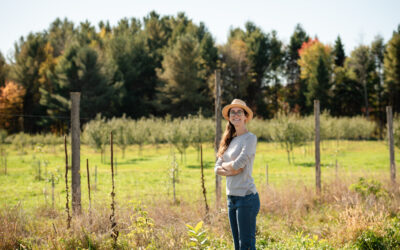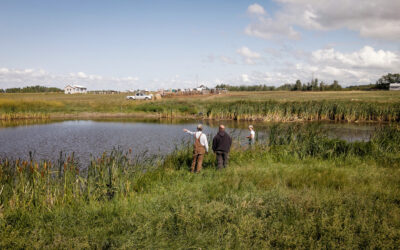Along the Qu’Appelle River northwest of Regina, the Sigurdsons have introduced an exclusion fencing project and restored riparian buffer with ALUS.
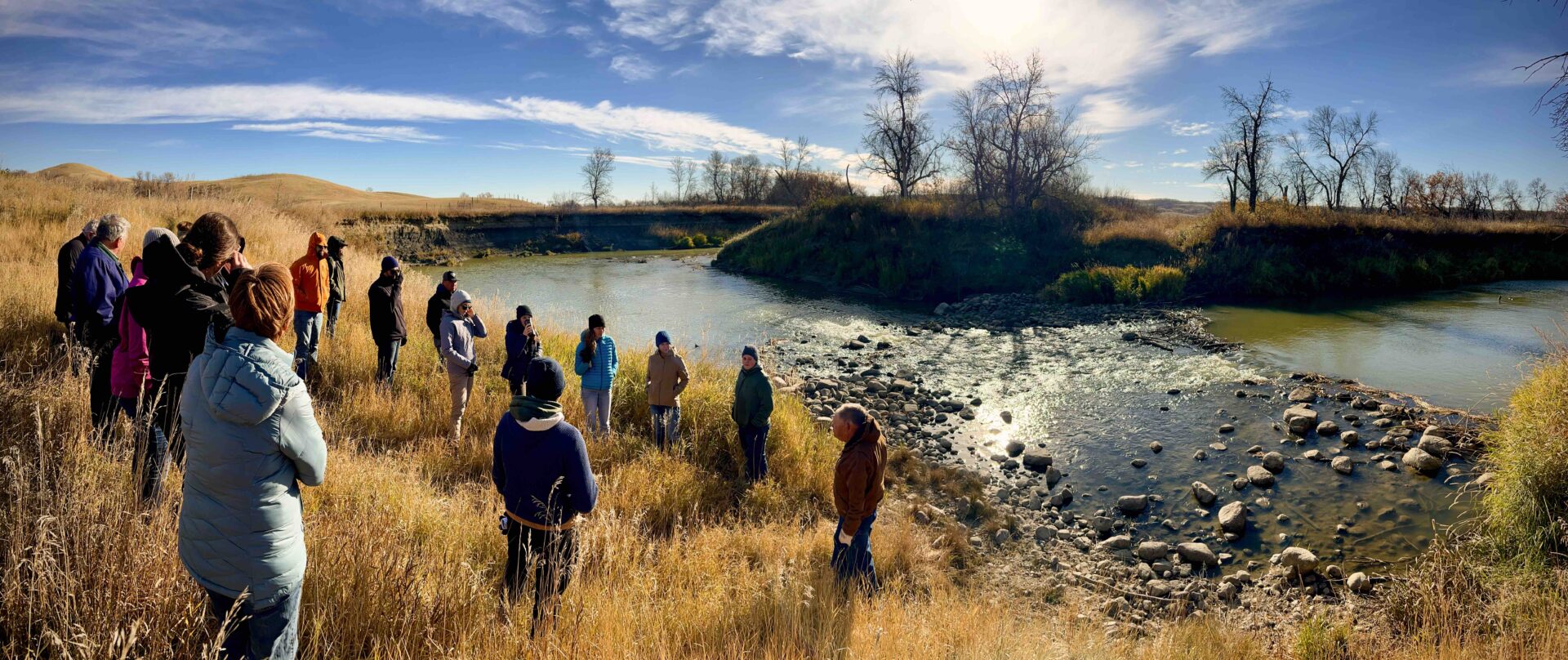
ALUS team members visit the Sigurdsons’ project near Lumsden, SK during the October 2022 Prairie Jamboree.
The water that winds through the valley is a signature feature of the landscape. On a sunny summer day, you might just see a herd of Mule deer along the banks; with their large ears pulled upright as they bend down to sip from the water. Although hidden in the moving water, the river is home to many species of fish, such as Northern Pike and Perch.
The Qu’Appelle River runs through the Qu’Appelle Valley northwest of Regina, Saskatchewan. Spanning nearly 500 kilometers, this winding waterway courses through much of the province. The Qu’Appelle runs east from Lake Diefenbaker and into six major lakes before joining up with the Assiniboine River in Manitoba. It’s quite a winding river, and every time it takes a turn the banks change shape, scrawling natural history across the landscape.
The Sigurdons’ property is on the cusp of the Qu’Appelle Valley, their rangeland rolling downwards into the valley where the river runs. The river is surrounded by scenic and bountiful grassland where they pasture their cattle. It’s all connected, the landscape, the cattle, the communities upstream and downstream—it’s connected to the Sigurdsons and how they manage their operation, how they work to support the resilience of this sensitive landscape.
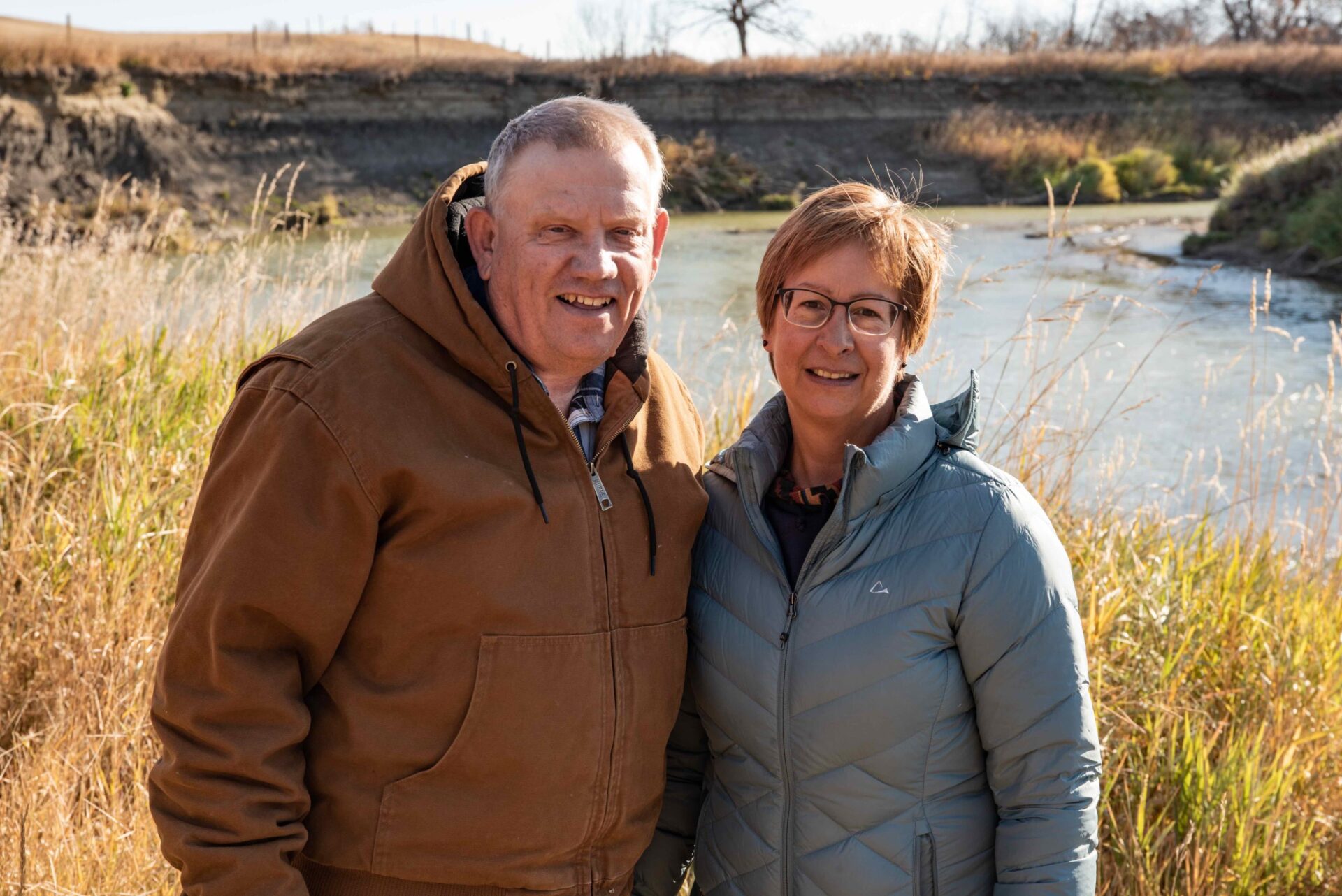
Dale and JoAnne Sigurdson stand alongside the Qu’Appelle River where it runs through their property.
When the Sigurdsons purchased their 3200-acre ranch near Lumsden, SK, the health and productivity of the land was depleted due to past grazing practices. This motivated Dale to look for solutions to improve the quality of the environment, knowing how important environmental health is for his cattle and his community.
“It’s all one and the same. To succeed economically, you have got to succeed environmentally as well,” says Dale.
In 2020, the Sigurdsons partnered with ALUS WUQWATR to construct an exclusion fencing project on their farm, subsequently restoring the riparian area along the Qu’Appelle River and implementing an enhanced grazing plan for their cattle. In the past, this low-lying area within the valley experienced flooding regularly in the spring. The Sigurdsons have attempted to grow hay in the valley bottom, but with little success. This non-productive area eventually became a “weed pit” that they kept the cattle out of. It wasn’t doing much good.
Seeking to do more with the valley bottom, Dale installed roughly 20 acres of fencing in 2020, which allowed him to go into those 320 acres of bottom land and heavily harrow the earth. This intervention stimulated the native grass seeds found in the soil and patiently the Sigurdsons stewarded the natural forage to return. An underground pipeline sourced from the low-lying riparian area feeds almost all the pastures throughout the year. These interventions have proven even more important in recent years, as significant periods of drought have impacted the region.
“By keeping the cattle away from the shore it just keeps that water so much cleaner and it’s better for them. I think that’s fairly important.” says Dale.
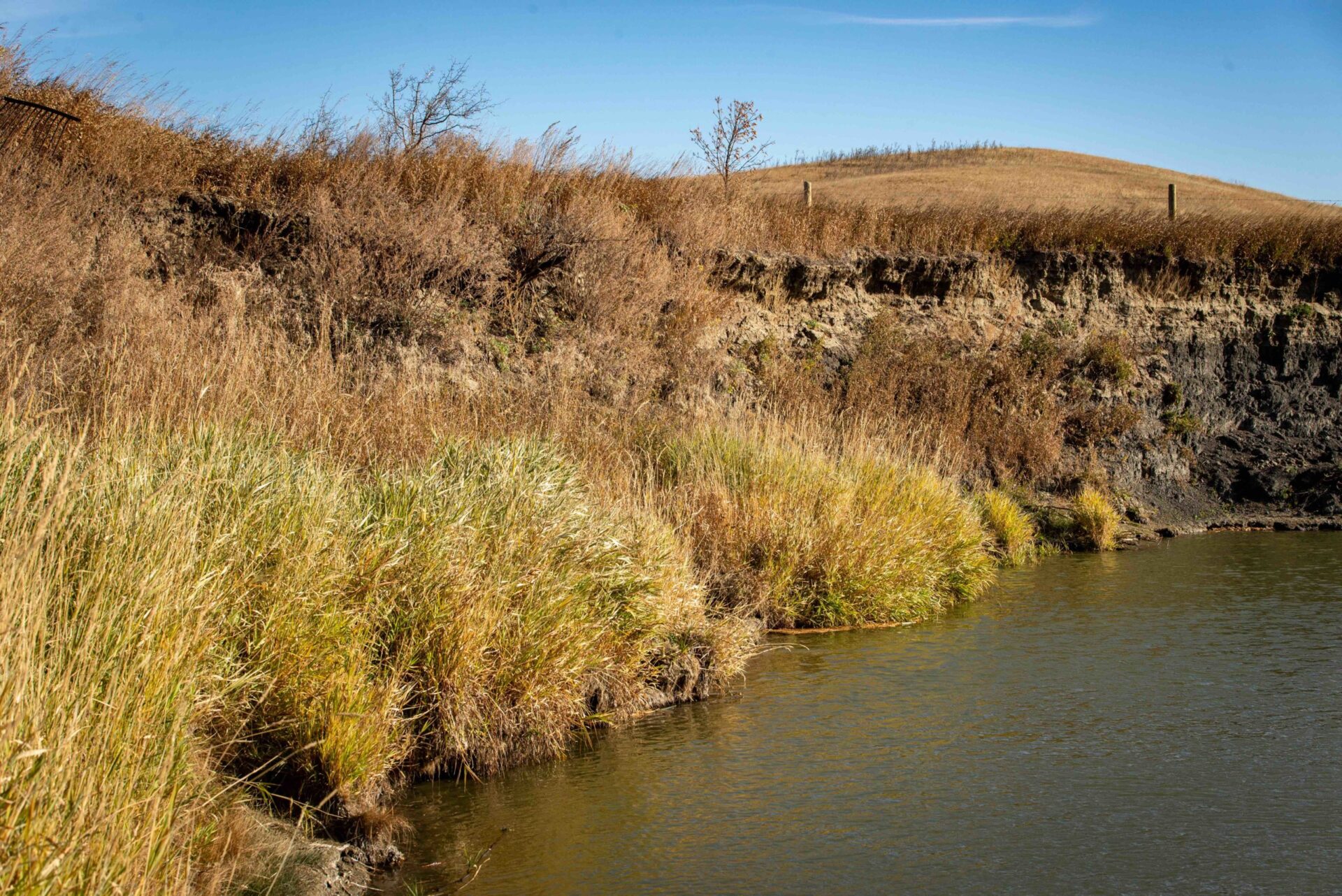
In addition to the new infrastructure, Dale and JoAnne also modified the rotational grazing they had always employed, now reserving one pasture entirely until the late fall. They also reduced the number of head on the farm, relieving grazing pressure and conserving water resources.
The benefits of riparian areas are innumerable, but for Dale, the main benefits include minimizing erosion, recharging ground water and filtering surface run-off. The Sigurdsons project is illustrative of the possibilities that can be pursued in partnership with ALUS.
“It is our responsibility. There is a benefit to protecting these riparian areas. I think that’s fairly important. It will also help with the overall health of your farm as well.”
Through community, financial support and technical guidance, ALUS has helped the Sigurdsons do more on their land than they would have been able to do alone. Their work highlights the ways clean water is critical to both farming and the natural environment. Desire for successful water stewardship is intuitive for most farmers, but together with ALUS, the Sigurdsons are connected to the resources they need to manage the natural habitat along the beautiful, winding Qu’Appelle River.

